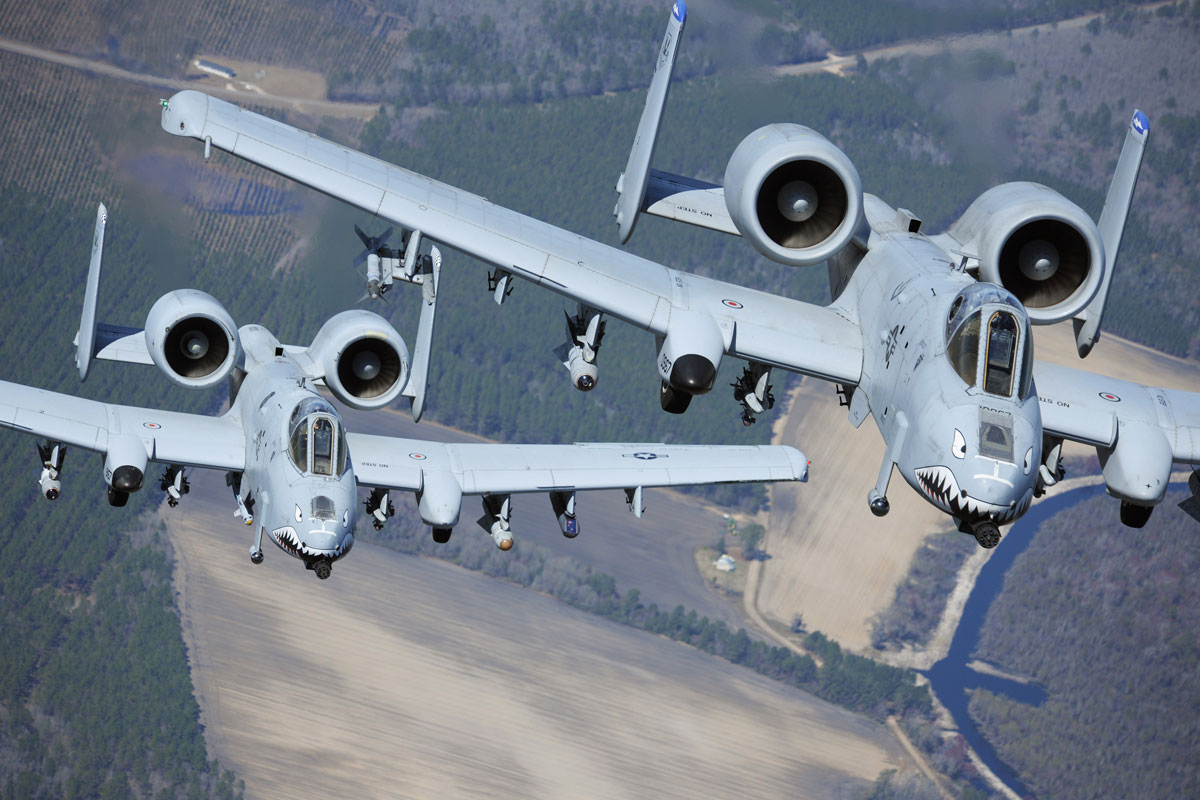The A-10 Thunderbolt II, affectionately known as the “Warthog,” is one of the most iconic aircraft in modern military history. Designed to deliver devastating close air support to ground troops, the A-10 has earned a legendary reputation for its ruggedness, firepower, and ability to take a beating while dishing out punishing attacks on enemy forces. With its distinctive appearance and battlefield dominance, the A-10 remains a symbol of brute strength and precision in the skies.

The Birth of the Warthog
In the late 1960s, the U.S. Air Force recognized the need for a specialized aircraft capable of supporting ground troops in intense combat situations. The Vietnam War had exposed the vulnerabilities of fast jets when engaging in close air support missions, prompting the development of a slower, heavily armored aircraft with a focus on ground attack.
The result was the A-10 Thunderbolt II, introduced in the early 1970s. Named after the P-47 Thunderbolt, a famed World War II ground-attack aircraft, the A-10 was built to destroy tanks, armored vehicles, and other ground targets. Its primary mission was to support ground forces in combat, making it an invaluable asset in any conflict.

A-10’s Unmatched Firepower
The heart of the A-10’s fearsome reputation lies in its weaponry. The aircraft is equipped with the GAU-8/A Avenger, a 30mm rotary cannon that is one of the most powerful aircraft-mounted guns in the world. This seven-barrel Gatling-style gun can fire up to 3,900 rounds per minute, with each round designed to penetrate the thick armor of enemy tanks.
The sound of the A-10’s cannon, often described as a menacing “BRRRRT,” has become infamous on battlefields. For enemy forces, the unmistakable roar of the Warthog’s gun is a terrifying reminder of its lethal capabilities. In addition to the Avenger cannon, the A-10 can carry a wide array of munitions, including bombs, rockets, and air-to-ground missiles, further enhancing its ability to strike targets with precision and overwhelming force.

The Indestructible Beast
What sets the A-10 apart from other aircraft is its rugged durability. The Warthog was designed with one mission in mind: survival in the most hostile environments. The aircraft is heavily armored, with titanium plating surrounding the cockpit to protect the pilot from ground fire. Its redundant flight systems ensure that even if key systems are damaged, the A-10 can still return to base safely.
The A-10’s twin-engine design, with engines mounted high above the fuselage, reduces the risk of damage from ground fire and increases survivability. The aircraft’s ability to fly at low speeds and low altitudes allows pilots to conduct precise strikes while minimizing exposure to enemy threats. Stories of A-10s returning to base with significant damage — from bullet-riddled wings to missing parts of the fuselage — are legendary, further cementing its reputation as an indestructible beast of the battlefield.

A Close Friend to Ground Troops
One of the key reasons the A-10 is so beloved by ground troops is its ability to provide close air support in even the most challenging combat environments. The aircraft’s slow speed and ability to loiter over the battlefield for extended periods give it an unparalleled advantage in identifying and engaging enemy targets. A-10 pilots, often referred to as “Hawg drivers,” build a close relationship with ground forces, coordinating attacks and delivering precision strikes that save lives.
In conflicts such as Operation Desert Storm, Operation Iraqi Freedom, and the War in Afghanistan, the A-10 proved its worth by decimating enemy armor and providing invaluable support to coalition forces. Its effectiveness in engaging enemy tanks, convoys, and fortified positions made it a key asset in every major conflict it has participated in.
Survival Despite Attempts to Retire It
Despite its undeniable effectiveness, the A-10 has faced repeated attempts to retire it from service. Critics argue that newer aircraft, such as the F-35, can fulfill the A-10’s role with more advanced technology. However, proponents of the Warthog argue that no other aircraft can match its specialized close air support capabilities and its ability to survive in hostile environments.
In response to its threatened retirement, the A-10 community has passionately advocated for its continued service, and their voices have been heard. Time and again, the aircraft has been spared from retirement due to its proven battlefield performance and the loyalty it inspires among both pilots and ground troops. As of now, the A-10 remains an integral part of the U.S. Air Force’s close air support arsenal.
The Warthog’s Future
As the A-10 approaches its 50th anniversary, questions about its future still loom. While modern aircraft continue to evolve, the unique capabilities of the A-10 make it difficult to replace. Upgrades to avionics, targeting systems, and weapons have kept the Warthog relevant in modern combat, and it is likely to remain in service for years to come.
With its unparalleled ability to engage ground targets, survive in hostile environments, and provide vital support to troops on the ground, the A-10’s legacy is secure. It has become more than just a plane — it’s a symbol of American military power, resilience, and the close bond between air and ground forces.
Conclusion
The A-10 Thunderbolt II stands as one of the most iconic aircraft in military history. Its combination of brutal firepower, rugged durability, and precise close air support capabilities has earned it a place in the hearts of pilots, ground troops, and aviation enthusiasts alike. As long as the A-10 continues to fly, its distinctive roar will remain a powerful reminder of the Warthog’s unmatched role on the battlefield.





